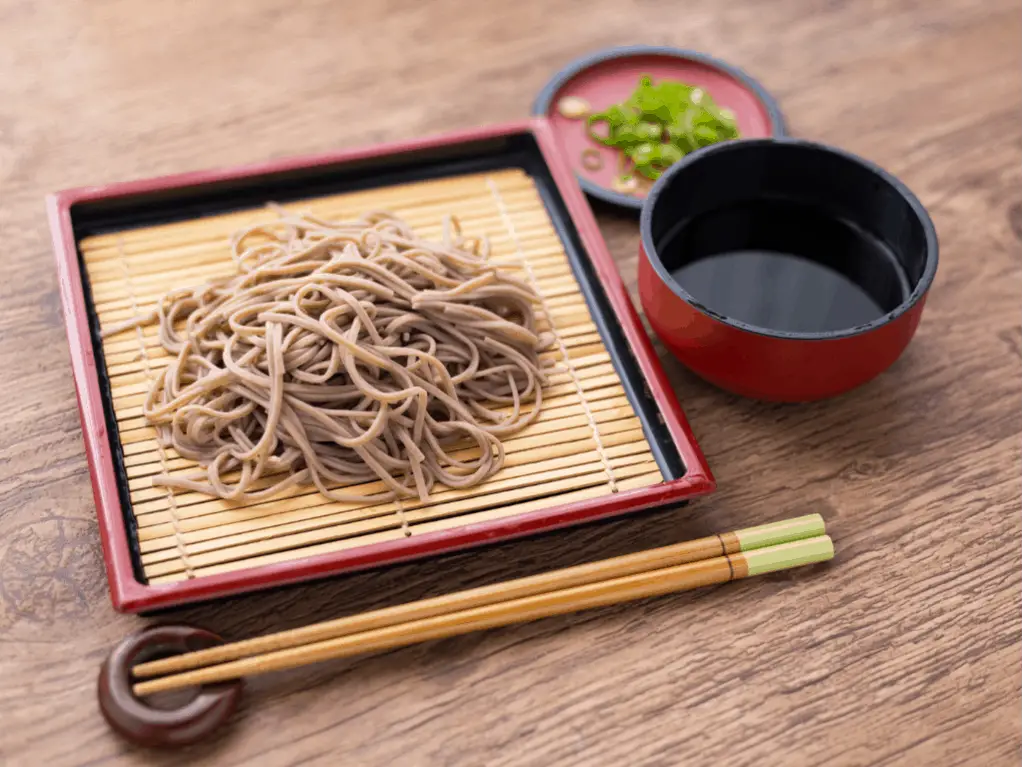Japanese food is both an exploration of the country and the language. It’s one of the most exciting aspects of exploring this vibrant culture. One of the most popular dishes, soba noodles, even hides its nutritional value in translation. I’m going to explore whether buckwheat noodles are soba noodles.
Soba noodles and buckwheat noodles are the same thing. Soba is actually Japanese for Buckwheat. In fact, soba noodles can be entirely made of buckwheat flour and water, although they are often made with wheat flour and salt added in.


People love Japanese food often for the health benefits, but it’s not always the healthiest. While foods like Gyoza and Miso soup always both have benefits, it’s how soba noodles are prepared that determines their nutritional value. This blog will discuss the different kinds of soba noodles and how healthy they are. .
Are Buckwheat Noodles Soba Noodles?
Asian noodles have a richness to their texture and flavor unique to their region. It’s why they’re so sought after and, from soba to ramen, you can find five-star restaurant-grade quality.
The question of are buckwheat noodles soba noodles can be found in a Japanese-English translation book. The word actually means buckwheat, but you can find a great deal of range in the aisles of a Japanese grocery store, online or in a restaurant.

Here are some of the various types of soba noodles.
Juwari Soba
If you want the most authentic soba noodles that really are just comprised of buckwheat flour and water, then the option you’re looking for is sometimes known as Juwari soba. If it doesn’t say it on the packaging, read the ingredients carefully. They should be the only two things listed.
Hachiwara Soba
If you go to a restaurant, however, you aren’t guaranteed that your soba noodles are entirely buckwheat. Often, they’re prepared using wheat flour and added salt. These noodles, typically containing about 80 percent soba and 20 percent wheat flour, are often listed as Hachiwari soba.
Sarashina Soba

Most soba noodles are of a darker, brown color, so it’s somewhat surprising to see the milky, white of Sarachina. The color is due to the fact that Sarashina is not made from buckwheat flour, but the endosperm of the grain’s seeds.
These noodles are incredibly thin, full of nutritional value and subtly sweet.
Nihachi Soba
Most menus in the U.S. that list their noodles as soba are specifically referring to this type of Nihachi soba. Some of the most basic soba, these are also made of 80 percent soba and 20 percent wheat flour, rendering them less healthy than traditional authentic soba.
Inaka Soba
In relation to Sarashina soba, Inaka is its evil twin. The stark, dark brown color comes out of the finely grounded buckwheat seeds that make up the flour. These noodles are considerably thicker than a lot of soba noodles, using a thickening agent known as Tsunagi.
Cha Soba
This is a particularly distinct variety of soba blended with matcha tea. Cha translates to green tea in English. So in addition to the flavor of buckwheat, they also have the flavor of some of the most robust teas in all of the world.
Where Can I Get Authentic Soba?

As previously mentioned, Nihachi soba is the most common in the United States. In fact, unless you know of a particular specialty store, finding any other variety can be quite the quest. There is always, however, the option of ordering the real stuff online.
Premium, authentic soba from Hokkaido, a Japanese site, is one excellent way of procuring it. The brand Yamamoto Kajino has what is purported to be some of the best Juwari soba on the internet.
If you are fortunate, there’s a real Japanese restaurant owned by a traditional family or Japanese company in your area. These aren’t easy to find, though bigger cities such as New York and Los Angeles have some locations that sell real soba.
The other option, of course, is to make them from scratch. The ingredients to make authentic soba flour are quite simple, and finding buckwheat flour is available at most grocery stores in the United States.
Soba noodles are not difficult to cook. They are boiled very much like traditional pasta noodles. Here are some ideas for how to use soba noodles in recipes.
- In Miso or other Asian soups
- As a simple side dish
- Added to green soups
- Fusion: Blend with Italian cooking and use tomato sauce.
- In cold, marinated salads.
Part of the fun of exploring Japanese cuisine is also the subtle taste you get of the culture’s rich language and history. Of course, you need to be able to tell the difference between Japanese and other Asian cuisines, which can take some training. More importantly, though, you can almost always be guaranteed a delicious meal.